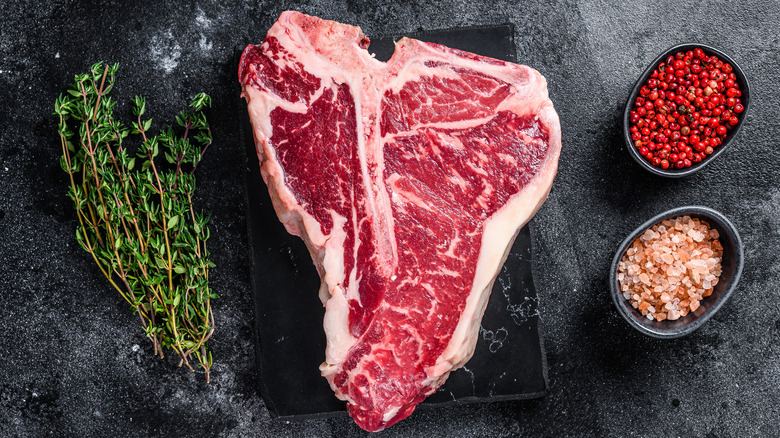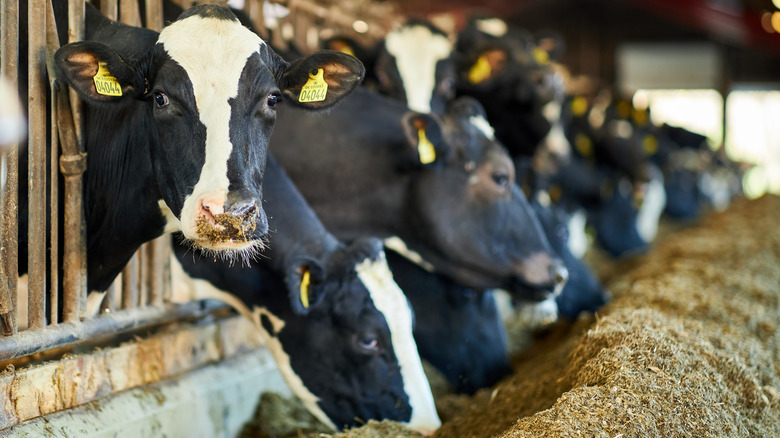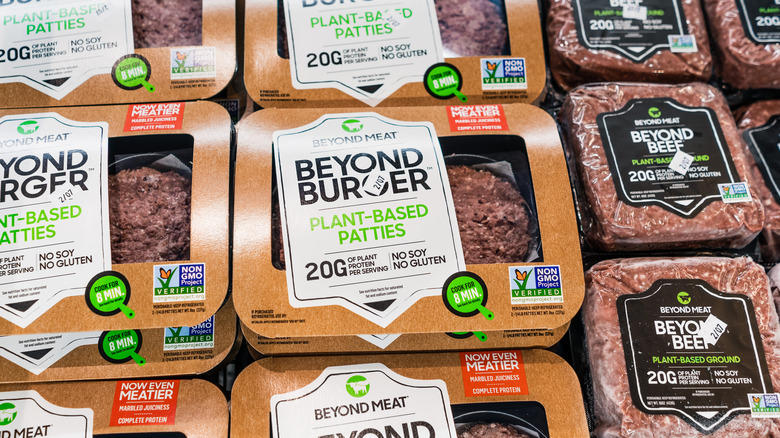The Surprising Amount Of Water It Takes To Produce A Pound Of Beef
In the early 2000s, Arjen Hoekstra created the water footprint concept. Similar to a carbon or ecological footprint, a water footprint measures the amount of water used in any process or activity. The results are staggering when accounting for the agricultural, packaging, and shipping operations involved in providing the food we consume. As it turns out, a surprising amount of water is used to get food from the farms to our tables — the most prominent water consumer being beef.
Because cattle come with mouths to feed, the production process of beef and other animal products tends to require more water than fruits and vegetables. Denver Water says a beef cow consumes thousands of pounds of grass, corn, and soybeans in its lifetime — and water is an essential resource to support all of these crops. That explains why the water footprint of meat from beef cattle is much larger than the footprint of meat from other, smaller animals.
Industrial raised vs. pasture-raised
When raising beef cattle, two processes largely determine the amount and type of water supply it will take to turn a 1,000-pound-and-change cow into a neatly packaged burger patty: industrial-raised and pasture-raised processes. It might come as no surprise that in the United States, industrial processes that prioritize quick turnarounds are the norm, with 80% of beef cattle raised industrially (via FoodPrint). While time spent in industrial feedlots allows for rapid weight gain, it's not without consequences like land use, waste, pollution, and stressed water supplies.
By comparison, pasture-raised cattle slow down production time because they take a longer time to gain weight. According to the Stone Barns Center for Food and Agriculture, it takes anywhere from 24 to 28 months for grass-fed cattle to reach market weight. However, because these cows feed on grass that is watered by rainfall, the water footprint of pasture-raised beef is much friendlier. Still, it doesn't mean it's environmentally sound. Not only do pasture-raised cattle take up a lot of land, but their slow growth rates mean they produce more methane gas during their life cycles (via PubMed).
The water footprint of beef
Whether industrial or pasture-raised, one pound of beef takes an average of 2,000 gallons of water to produce (though that water footprint is "greener" for pasture-raised cows because it incorporates the natural cycle of rainfall). To compare, Foodtank says that one pound of pork takes 718 gallons, while soybeans only take 206. These numbers show the resource-intensive state of the current beef supply system, which is only projected to grow along with the human population. But by acknowledging the amount of water the beef cattle industry consumes, we can begin to take sustainable steps forward.
We can decrease our own personal water footprints by making simple decisions to reduce consumption in our daily lives. However, like cattle, the greatest contributor to our own water footprints is the food we eat. When possible, opting for beef with grass-fed labels, choosing a less water-intensive protein like chicken or fish, or beginning to introduce vegetarian-based meals into our diets are small but effective ways for us all to become more resource-conscious.


